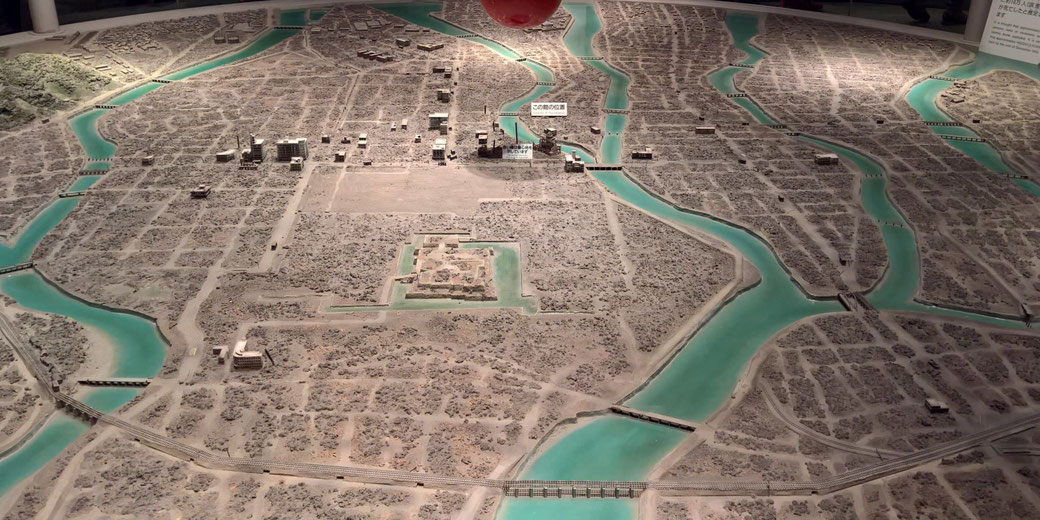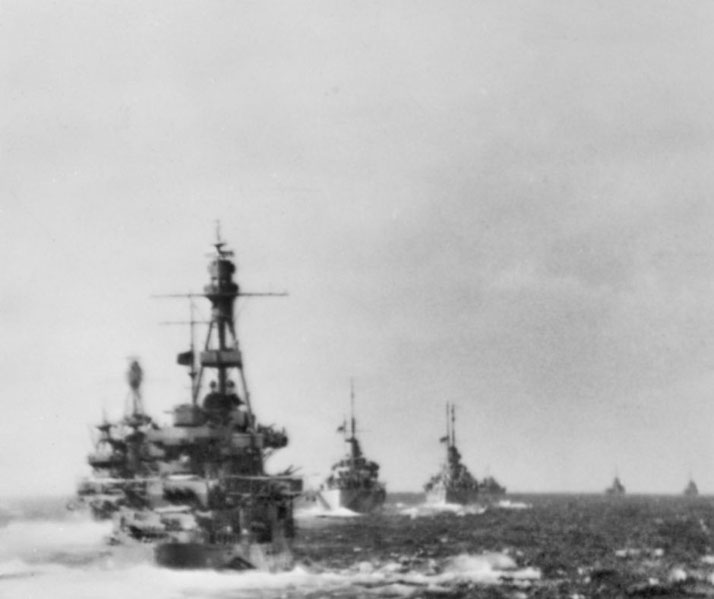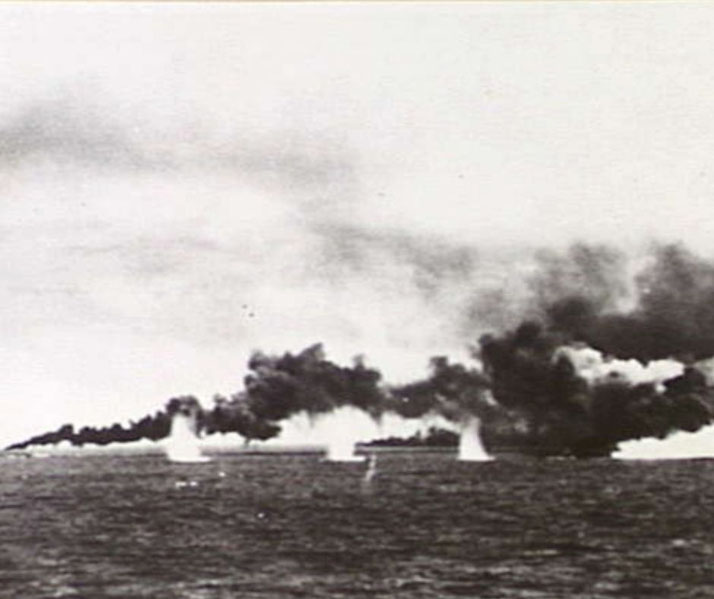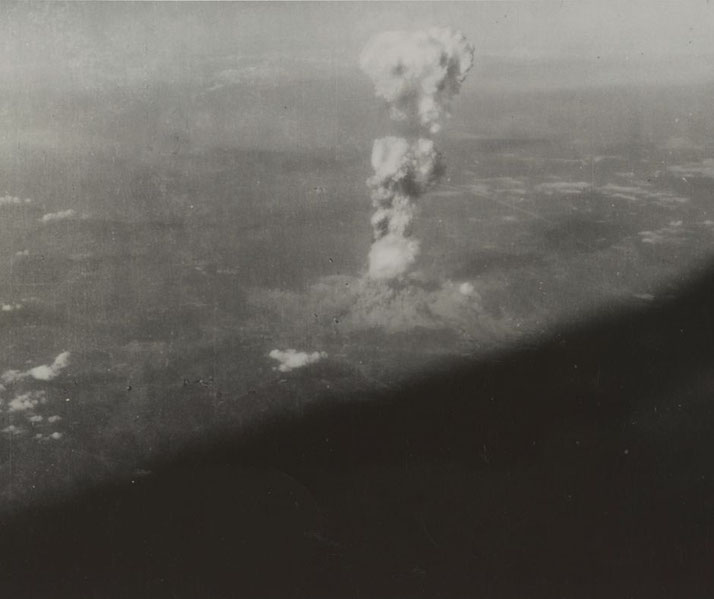How the Allies defeated Imperial Japan in WWII

In the Pacific theatre of World War Two, Japan was the clear aggressor. The country had launched a devastating surprise attack on Pearl Harbor on the 7th of December, 1941 and had quickly conquered much of Southeast Asia.
However, by 1945 the Allies had gained the upper hand and were rapidly recapturing strategic locations that were lost earlier in the war.
With resources running out and their forces facing successive defeats across the Pacific, the Allies had to find a way to convince Imperial Japan to surrender to prevent a mass invasion of the Japanese home islands.
How the Allies turned the war in their favor
In the first six months of the war in the Pacific, Japan had experienced a series of victories, including the capture of Singapore and even the bombing of Darwin in northern Australia.
However, their expansion was dramatically halted in a number of key naval battles, including in the Coral Sea and the Battle of Midway in May and June 1942 respectively.
Soon after, the Kokoda campaign in New Guinea stopped the Japanese advance on land as well.
This critical campaign, which lasted from the 21st of July to the 16th of November 1942, saw a small group of Australian soldiers hold off a much larger Japanese force, buying time for the Allies to mount a counteroffensive.
By the end of 1942, Japan was in a difficult strategic situation. Their forces were so spread out across the Pacific region that it was becoming increasingly difficult to consistently support them.
The great distances ships needed to cover in order to get vital supplies of food, ammunition, and medical equipment meant that some forces went weeks and months without help.
What made things worse was that increased Allied control of the oceans resulted in Japanese fleets being decimated.
Therefore, some of their armies were cut off from any means of evacuation.

The American 'island-hopping' strategy
During 1943, the Japanese Empire did its best to hold on to their territorial gains and to produce enough ships and aircraft, but in reality, they could not match the sheer industrial capacity of American factories.
The US were able to construct so many ships that by 1944, they had built up a large navy, supported by a well-equipped army and air force in the Pacific theatre.
The American army, under the command of General Douglas MacArthur, used their control of the sea to begin a series of island-hopping campaigns to drive back the Japanese.
Island-hopping was a strategy that consisted of taking back key islands that were under Japanese control and using them as bases to launch attacks on other Japanese-held islands.
Any islands that were not considered important enough were simply ignored and the US ships would sail past them on the way to the next key locations.
Since any Japanese troops on these islands could not be reached by the Japanese navy, the Allies no longer considered them dangerous and could effectively ignore them.
As a result, the Allies were able to choose the most important locations for major battles.
Japan also focused its armed forces to defend the most critical locations for their empire.
Battle of the Philippine Sea
On the 19th of June 1944, the United States launched an attack on the Japanese-held Mariana Islands.
The Marianas Islands, particularly Guam, Saipan, and Tinian, were in an important strategic location as it lay alongside key Japanese sea lanes.
This was known as the Battle of the Philippine Sea, and it resulted in a crushing defeat for the Japanese.
The most famous event of this campaign was known as the 'Great Marianas Turkey Shoot', in which the United States destroyed over 400 Japanese planes.

Recapture of the Philippines from the Japanese
Next, in 1944, General Douglas MacArthur returned to the Philippines to fulfill his famous promise to the Filipino people that he would return after his forced departure in 1942.
MacArthur, who had been serving as the Supreme Commander of the Allied Forces in the Pacific, led a massive amphibious invasion of the Philippines, with the goal of liberating the country from Japanese occupation.
The campaign had begun on October 20, 1944, when Allied forces landed on the island of Leyte.
The invasion was supported by a massive naval and air assault, which led to one of the most important battles of this strategy: the Battle of Leyte Gulf, on the 23–26 October 1944.
It was the largest naval battle of World War Two, and it resulted in a decisive Allied victory.
Despite fierce Japanese resistance on land, the Allied forces were eventually able to establish a foothold on the island, and over the following months, they continued to push the Japanese back.
In February 1945, Manila was liberated from Japanese control, although the battle for the city was one of the most intense and destructive of the entire war.
MacArthur famously waded ashore onto the beach in Leyte, declaring, "I have returned".
The brutal Battle of Iwo Jima
The next year, in early 1945, the United States invaded the island of Iwo Jima. This was a small but strategic location, as it provided the Allies with a base from which to launch air raids on mainland Japan.
The battle was fought between the 19th of February and the 26th of March 1945 and resulted in massive death tolls of American soldiers.
This was because the Japanese had dug tunnels and bunkers into the volcanic rock of the island, making it incredibly difficult for the Allies to root them out.
Ultimately, the United States would be able to achieve victory over the island, but the cost in human life was heavily criticized.
The catastrophic US invasion of Okinawa
The final major battle in the Pacific theatre was the invasion of Okinawa. This took place between 1st April and 22nd June 1945.
The island of Okinawa was important because it was the closest location to the mainland of Japan.
If captured successfully, it could be used for a base from which to launch a much larger land invasion of the Japanese home islands.
This battle was fought mainly by United States Marines, who once more faced dogged resistance from the Japanese defenders.
The Battle of Okinawa resulted in over 82,000 direct combat casualties on the Allied side, and nearly 150,000 Japanese casualties, making it one of the bloodiest battles of the Pacific War.
In the end, however, the Allies were able to seize control of the island.
Kamikaze attacks
As Japan continued to face catastrophic losses in each of these battles and failed to reach their stranded forces across the Pacific, things became increasingly desperate.
By late 1944, Japan was facing severe economic strains, including critical shortages of fuel and raw materials.
This meant that they had drastically reduced their naval and air capabilities.
By the start of 1945, the Japanese army was retreating on all fronts, and they knew that an Allied invasion of mainland Japan was inevitable.
In a last-ditch effort to stop the Allies, the Japanese began using Kamikaze attacks.
Kamikaze pilots would fly their planes into Allied ships in suicide missions. This caused significant damage to the Allied ships and men, particularly in the battles of Leyte Gulf and Okinawa, but it was not enough to turn the tide of the war.
Firebombing of Tokyo
As the Allies inched closer to Japan and had captured islands to use as air bases, they began strategic bombing campaigns against Japanese cities, infrastructure, and industrial centers.
The first of these began in mid-1944, but they increased in frequency and intensity in 1945.
The first major bombing raid was called Operation Meetinghouse on the night of the 9th to the 10th of March 1945.
This operation saw the United States Army Air Forces drop thousands of incendiary bombs on the capital city of Tokyo.
The resulting firestorm killed over 100,000 civilians and destroyed 16 square miles of the city.
In fact, this was the single deadliest air raid of World War Two, and it demonstrated the Allies' willingness to use whatever means necessary to win the war.
The atomic bombings of Hiroshima and Nagasaki
By early 1945, it was clear that the Allies were going to win the war in the Pacific.
However, the Japanese refused to surrender, and they continued to fight fiercely.
Allied military planners were beginning to realize that even the Japanese civilians were being trained to resist any land invasion.
If Japan didn't surrender, American forces would have to face even worse casualties than they had suffered in the difficult island battles so far.
So, in order to force a surrender and avoid a land invasion, the United States dropped two atomic bombs on Japan: one on Hiroshima and one on Nagasaki.
These two cities were chosen as the targets because they were large industrial centres which produced a lot of the resources Japan used in the war.
The first bomb was dropped on the city of Hiroshima on the morning of the sixth of August.
In the space of one day, over 70,000 people were killed and another 70,000 were injured.
The second bomb was dropped on Nagasaki three days later. This bomb killed an estimated 40,000 people.
The huge death tolls finally forced members of the Japanese government to consider if surrender might be the best option.
However, there were still vocal members of the military that refused to consider it.
They also received news that the Soviet Union had declared war on Japan on the 8th of August 1945 and, the next day, Soviet forces invaded Japanese-held territories in Manchuria.
This placed significant pressure on Japan, as they now had to fight a war on two fronts, which they knew they did not have the resources to do.

The surrender of Japan in 1945
Finally, on the 15th of August 1945, Japanese Emperor Hirohito made a, now famous, radio address to his people.
Known as the Gyokuon-hōsō address, it was the first time in history that the common Japanese citizens heard their emperor’s voice.
However, he took this unprecedented step to ensure that all the Japanese people understood that the nation would surrender and that they needed to lay down their weapons.
Then, on September 2nd, 1945, Japan signed a formal surrender agreement with the Allies.
With Japan's defeat, World War Two came to an end. The Allies had emerged victorious from one of the deadliest conflicts in human history.
However, over 60 million people had died during the conflict in Europe and the Pacific theatres.
What do you need help with?
Download ready-to-use digital learning resources
Copyright © History Skills 2014-2025.
Contact via email
With the exception of links to external sites, some historical sources and extracts from specific publications, all content on this website is copyrighted by History Skills. This content may not be copied, republished or redistributed without written permission from the website creator. Please use the Contact page to obtain relevant permission.





